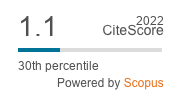Macro y mesoclimas del altiplano andino y desierto de Atacama: desafíos y estrategias de adaptación social ante su variabilidad
DOI:
https://doi.org/10.4067/S0718-34022013000200003Keywords:
Multiscalarity, Climatology, Tropical Monzoon, Desierto de AtacamaAbstract
From a geographical perspective are multiscalarity analized quantitative and qualitative factors and components that give specificity to the climate of the Atacama Desert, the driest in the world, and to Andean mountains and plateaus from which depend on water sources, human settlement and economic activities, especially mining, which is the main basis for the economic growth of Chile. The South American monsoon, which brings together air masses and flows from continental inland, towards altiplanos and the Pacific coast, acts as the most important macroclimatic component, while meso-scale topoclimatic conditions, associated with exposure, altitude and topography of reliefs, determine water in the landscapes.The demand for water generated by mining boom and the adaptation strategies of indigenous communities to cope with climate change and variability provide the meaning and significance to socioclimates, which natural and socio-economic elements should be interdisciplinary and scalarly integrated






